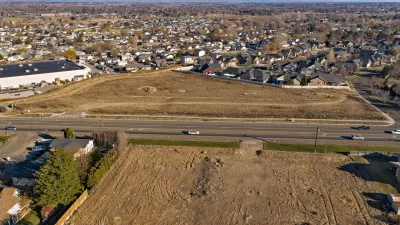By defining "externalities" as impacts of private conduct, economists and lawyers bias public discussion in favor of government regulation.

Some years ago, I was writing an article criticizing minimum parking requirements. I originally wanted to refer to these rules as "externalities": that is, the consequence of an activity that is experienced by persons other than the beneficiaries of that activity. My argument was going to be: just as private polluters create externalities that harm the general public, these regulations increase pollution and thus also create externalities.
But at least one of the people who gave me pre-publication feedback disagreed with my terminology: he suggested that the impact of government regulation was not an externality, because by definition an externality must involve a consensual market transaction.
Leaving aside the question of whether my friend was technically correct, it seems to me that this distinction itself may have negative impacts upon public policy. The purpose of zoning (and many other forms of government regulation) is to limit the harm to the public from negative externalities. So if zoning prevents externalities but never creates externalities, then one might think that more government regulation is usually desirable. Thus, the common definition of externalities as "results of private conduct" biases decision makers in favor of government regulation.
But this way of framing the issue leads to absurd results, because obviously government regulation can create harm to the public that outweigh the harms caused by the externalities that the regulation prevents. So to solve this problem, we should redefine externalities to include the results of regulation.
It could be argued that the two types of harm are not comparable: private market transactions are usually designed to aid a limited set of parties (such as producers and consumers of the same product) while government regulation is designed to aid the public as a whole.
But this claim is not always accurate: government regulation is often designed to benefit a small group. For example, politicians might enact restrictive zoning in response to neighborhood fears about the perceived externalities caused by new housing or new commerce. Thus, such regulations are like a market transaction in that they benefit politicians and the neighborhood, rather than the city as a whole. If such regulations harm the city as a whole by increasing housing prices or increasing the negative side effects of low density* they start to look a lot like an externality-creating market transaction: group A (politicians) makes a deal with group B (neighborhood). Both A and B benefit, just as in a market transaction. But group C (people who now cannot afford neighborhood B, or even afford other neighborhoods if citywide housing costs rise) suffer. Similarly, if the city widens residential and commercial streets to facilitate fast car traffic, group A (the city) has satisfied group B (speeders) at the expense of other groups, such as non-drivers who use those streets.
*Such as car dependence when density is too low to support high transit ridership, and the pollution and ill health caused thereby.

Pennsylvania Mall Conversion Bill Passes House
If passed, the bill would promote the adaptive reuse of defunct commercial buildings.

World's Largest Wildlife Overpass In the Works in Los Angeles County
Caltrans will soon close half of the 101 Freeway in order to continue construction of the Wallis Annenberg Wildlife Crossing near Agoura Hills in Los Angeles County.

U.S. Supreme Court: California's Impact Fees May Violate Takings Clause
A California property owner took El Dorado County to state court after paying a traffic impact fee he felt was exorbitant. He lost in trial court, appellate court, and the California Supreme Court denied review. Then the U.S. Supreme Court acted.

California Grid Runs on 100% Renewable Energy for Over 9 Hours
The state’s energy grid was entirely powered by clean energy for some portion of the day on 37 out of the last 45 days.

New Forecasting Tool Aims to Reduce Heat-Related Deaths
Two federal agencies launched a new, easy-to-use, color-coded heat warning system that combines meteorological and medical risk factors.

AI Traffic Management Comes to Dallas-Fort Worth
Several Texas cities are using an AI-powered platform called NoTraffic to help manage traffic signals to increase safety and improve traffic flow.
City of Costa Mesa
Licking County
Barrett Planning Group LLC
HUD's Office of Policy Development and Research
Mpact Transit + Community
HUD's Office of Policy Development and Research
Tufts University, Department of Urban and Environmental Policy & Planning
City of Universal City TX
ULI Northwest Arkansas
Write for Planetizen
Urban Design for Planners 1: Software Tools
This six-course series explores essential urban design concepts using open source software and equips planners with the tools they need to participate fully in the urban design process.
Planning for Universal Design
Learn the tools for implementing Universal Design in planning regulations.



























